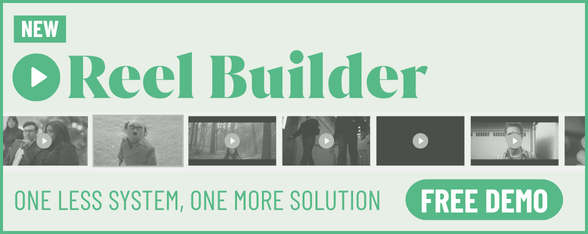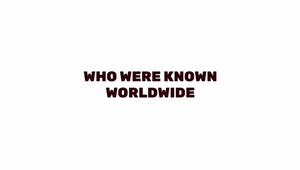
For Mel Klein There's Always a Plan B

Mel Klein is one of true’s hidden superstars. In her earlier years, she studied psychology and has always been interested by how people are influenced by unconscious decisions, and the impact of language, culture and society.
Starting her career in PR and marketing, Mel curveballed into the world of UX – where she’s found her space to be creative, while applying design rationale to human behaviour.
LBB> Tell us about your current role and design specialism(s)?
Mel> I am a junior UX consultant at true.
My role spans the entire project process, working with the client to understand their business and user’s goals and needs, user research and exploring solutions, wireframing, and reviewing and iterating designs.
I especially like to work on optimisation projects where we discover unexpected opportunities using data analytics and make small UX and design adjustments to improve it. A little refresh and tweak here and there can make a big impact.
LBB> What drew you to design in the first place and how has your design career evolved?
Mel> Coming from a degree in psychology, I was initially fascinated by how we are so influenced by unconscious decisions, and the impact of language, culture and society.
I started my career in PR and marketing but found this wasn’t quite right for me- the digital team in those agencies had a much more varied day-to-day, and I was excited to listen and feedback on their presentations and I wanted to find out more about what they did.
They introduced me to UX design which I hadn’t really heard of or even considered to be an integral part of a brand’s digital presence.
The pandemic meant I had some time to re-train as a UX designer which ended up being an ideal fit- it allows me to be creative while applying my design rationale to human behaviour.
LBB> What aspects of design do you get really nerdy about personally?
Mel> I get most excited about developing a previously ‘offline’ experience into an online one.
Modern digital experiences are becoming the expected standard for customers, allowing more control and ease of managing their accounts within a few taps- nobody wants to spend hours on hold to customer services, or getting lost in a myriad of confusing pages.
More and more companies are seeing the value in investing in their digital customer experience.
Monzo and Octopus energy are great examples of services whose competitive edge is their digital experience- in some ways their app is more of the selling point than the service itself.
What I love about this is that it doesn’t need to be groundbreaking. When we go online, we very rarely get excited about the ‘digital experience’ of it, especially if it's something mundane like checking your utility accounts- BUT if we come across something unexpected it can really put a damper on your day.
Sometimes creating a frictionless, effortless user journey that is fairly forgettable and causes no issues is just as valuable.
LBB> There are so many new design tools out - what tools do you like to use and why? (whether digital platforms or old fashioned pen and paper!)
Mel> At the start of any project, I always start with braindumping on Miro. Digital workspaces like Miro are fantastic for storing and refining ideas.
I like to take screenshots from competitor or inspiration sites and add notes, sometimes mashing together a couple of screenshots to make low fidelity wireframes. A lot of these end up as half-baked ideas that never make it to the backlog, but they can always be dusted off later.
Figma is also surprisingly easy to use, with plenty of YouTube tutorials out there and resources if you want to try something different or strengthen your skills. It's also wonderfully collaborative- some of our clients even use it to leave feedback!
LBB> Design Thinking - thoughts?
Mel> The design thinking process lends itself well to user-centred design, ensuring UX is involved at every step of the project, and is generally a good framework for a project to flow as smoothly as possible- however there can never be a single process that guarantees success.
It follows a well-planned approach while not being too rigid, encouraging iteration and looping back to previous steps as a continuous process- rather than something that has a hard start and stop.
LBB> What are the most persistent misconceptions about your particular design specialism that you see across the advertising and marketing landscape?
Mel> I think a common misconception is if a site or even a specific component start to perform poorly it is due to poor UX design, but if it initially performed well it just needs a tweak and a refresh- something that can be discovered by frequent user testing and data analytics monitoring to highlight any areas of opportunity.
You can try your best to future-proof a design, but its inevitable that it will become stale. User behaviour and technical innovation evolve over time, and digital products need to follow or be left behind as a successful product will not perform the same in two years.
Good UX design is not a one stop job, but rather a continuous process of testing, iterating and testing again.
LBB> Accessible design is an increasingly prominent topic - from your experience what are the most challenging facets of accessible design? And what does best practice in accessible design in your particular design specialism look like?
Mel> The most challenging aspect is that in an ideal world, we would be able to test a diverse group of real users to ensure accessibility needs are met, and to help us build an accurate picture of how different people interact with the website.
In reality, this doesn’t happen very often which opens up the risk of losing a portion of potential users.
To minimise that risk, we need to understand that considering accessibility in designs benefits all users, and not just a small portion of users- things like consistent components and layouts, recognisable buttons, alternative gestures on mobile etc. improve the experience for anybody.
The WCAG guidelines offer a useful checklist of things that should be considered and range from ensuring the page can be read using a screen reader, to colour contrast and font sizes. If testing with people with accessibility needs isn’t an option- there are also plenty of tools to test how a site may be viewed by people with various accessibility needs.
LBB> What design controversies or challenges do you find trickiest to navigate or do you find yourself thinking about most frequently?
Mel> A challenge I see is designing for a diverse audience of users, as finding a balance to create an ideal user experience for everyone is an impossible task and could potentially lead to a subpar experience for all.
The reality is that some users will have incompatible user needs- for example a camera-fanatic might want to be able to access lots of complex tech specs and see a cross-section of how the mechanisms works, while another is a hobby photographer who would be absolutely overwhelmed and intimidated by this.
Trying to meet in the middle would meet neither persona’s needs, so a decision must be made of who to design for.
This is why we create personas at the early stage of the design process, so that we have a common understanding of how different users interact with the site and can prioritise which needs and goals would produce the most success.
LBB> How do you think about the ethics of design?
Mel> The goal of UX is to encourage certain behaviours and influence decisions, so could always be described as unethical to some degree - but I do believe it can and should be designed responsibly. The consequences that UX design has on a user should always be considered.
It is a hotly debated topic in the space of e-commerce: how can we improve conversion rates without falling on dark patterns that deliberately manipulate and influence consumer decision-making leading to unintended purchases and overconsumption? We want users to have a positive after-purchase experience too, and for them to keep coming back as regular users so it's important that this journey doesn’t leave a bitter taste, even if it improves sales.
In any context, a user should make informed decisions without ambiguity or strange confusing journeys- a great example of what I would consider unethical design is when subscription services bury their cancellation in a long winded journey- so frustrating!
LBB> What are some of your favourite examples of creative design solutions that inspire you?
Mel> As someone who spent many years locked onto the Sims, any kind of simulation-esque digital experiences excite me. ‘Design your own’ visualisers for furniture are so much fun- Tylko does a great job of this, allowing you to customise any kind of storage furniture, without the cost and faff of having someone come and give a quote.
Visualisation can enhance the experience in many contexts, not just in product customisation. Getting the user to actively engage in content using interactive infographics, maps or charts makes that content much more understandable and memorable, so I like to find ways to make a user's experience more engaging and active.
LBB> Which design projects throughout your career have been the most satisfying to work on and why?
Mel> Supporting the St Austell wholesale platform- having worked in pubs previously I had some personal insight into what I would have wanted as a customer. There’s also something satisfying in seeing commercial success backing up your design decisions.
To give an example, we wanted to find a new way to cross-sell products to customers, with the challenge being that they are on a restricted budget, rarely impulse buy and usually order the same items.
We added an extra step within the checkout journey that showed customers their regularly ordered items that weren’t in their current basket as a reminder that they may have forgotten something.
This significantly increased basket spend, and most importantly, we received positive feedback from users that it was genuinely useful as they are often rushed and in a time crunch and might have missed something.
LBB> What’s going on at the moment in design that’s getting you particularly excited?
Mel> As above with the example of the ‘design your own’ visualisers and bringing ‘offline’ experiences online, it's becoming easier for customers to do the fun bits of ‘work’ themselves. I hope that AR improves so that you can accurately visualise something in your own space- I don’t want to bother with measuring myself!
LBB> Who are your design heroes and why?
Mel> The first person I think of is my mum!
She creates beautiful decorations around the house using just everyday things. We grew up doing arts and crafts together and the most important lesson I learned in being creative is that if you make a mistake- there’s always a plan B. It’s sometimes easier to give up and start again, but my favourite pieces were always the ones where I changed my plan and just kept going.
This skill has been valuable in UX, finding a new path and solution when hit with a scope or requirement change.
LBB> Thinking of people at the beginning of their career, what advice would you give them for navigating this constantly changing field?
Mel> Don’t be afraid of trying new things and learning new skills- anything takes time and effort to master. Don’t be discouraged if you aren’t an expert straight away, take your time and enjoy it!















